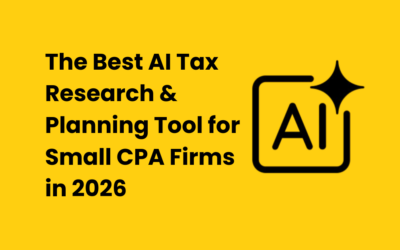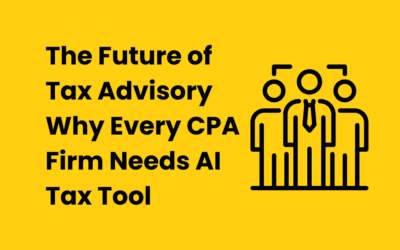Small CPA firms are adopting AI tax research tools, AI tax planning tools, and agentic AI in tax at record speed to stay competitive, reduce workload, and deliver higher-value advisory services.
Why Small CPA Firms Need AI Tax Research & AI Tax Planning Tools to Stay Competitive in 2026
Running a CPA firm with 2–20 associates means you are constantly balancing tax compliance, growing advisory revenue, and training junior staff—often with limited resources.
The Future of Tax Advisory: Why Every CPA Firm Needs a Simple, Low-Cost, Versatile AI Tax Planning Tool
If you’re planning to expand into higher-value tax advisory services or upsell existing clients, the right AI tax planning tool becomes essential.
Can missed deductions from past years be claimed now?
Most deductions must be claimed on the return for the year the expense was incurred. If you missed one, you generally need to file an amended return for that year.
What are the IRS educational benefits for college and grad students?
American Opportunity Tax Credit (AOTC): For the first four years of postsecondary education; must be at least half-time in a degree or credential program and have not completed the first four years
How do I calculate the tax on inherited IRAs?
Identify whether the account is a traditional IRA or a Roth IRA, and whether you’re a spouse beneficiary treating the account as your own or remaining a beneficiary.
How do I claim the Child Tax Credit or Credit for Other Dependents?
Child Tax Credit (CTC): For each qualifying child under age 17 at year-end who is your dependent, generally lived with you more than half the year, and has an SSN valid for employment issued by the return’s due date
Are Social Security survivor benefits taxable?
Social Security survivor benefits are treated the same as other Social Security benefits for income tax purposes. Up to 85% of benefits can be taxable depending on your total income and filing status.
What is the 2025 annual gift exclusion amount?
IRS “What’s New — Estate and Gift Tax” and Gift Tax FAQs list the 2025 annual exclusion as $19,000 per donee 2
What income triggers the Additional Medicare Tax?
The 0.9% Additional Medicare Tax applies when an individual’s earnings exceed filing-status thresholds. It is imposed on:


